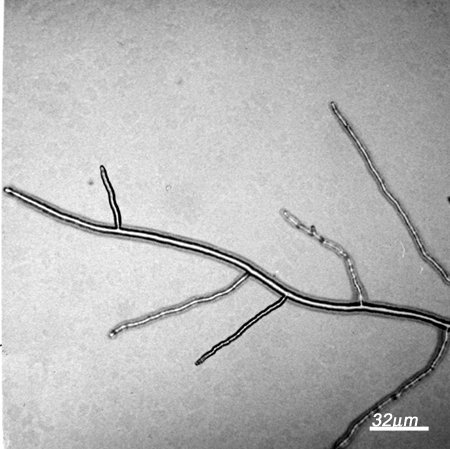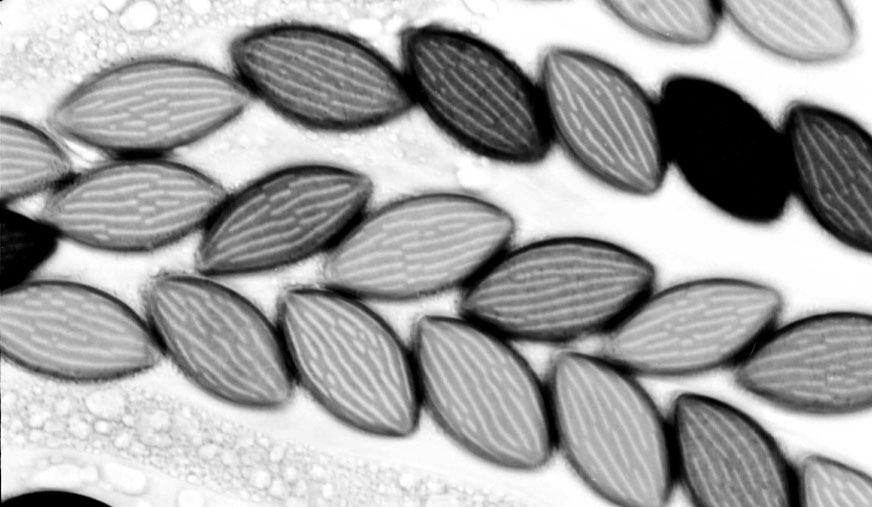
Normally maturing asci in a cross between two unrelated wild type strains
from N. Raju
1. Ascomycete
Neurospora is a member of the large group of "higher" fungi called Ascomycetes. The diagnostic feature of Ascomycetes is that
the cells that are products of a single meiotic division are temporarily contained in a membranous sac called an ascus. Other
familiar ascomycetes are Aspergillus (a greenish mould common in homes), Penicillium (another greenish mould and the source
of the drug penicillin) and Saccharomyces cerevisiae (baker's or brewer's
yeast).

Normally maturing asci in a cross between two unrelated wild type strains
from N. Raju
2. Filamentous growth
Like moulds in general Neurospora grows by elongation of the tips of its hyphae, and by the formation of new tips as
branches just behind the main tip. Neurospora is one of the fastest-growing filamentous fungi, approximately 10 cm per day.

FGSC 988, wild type showing filamentous growth.
from T. Griffiths
3. Striated football-shaped ascospores
The genus name Neurospora when literally translated means "nerve spore". This refers to the longitudinal striations,
resembling nerve axons, on the football-shaped ascospores. This is the key diagnostic for the genus.

Image courtesy of N. Raju
4. Orange color
Neurospora is sometimes called the orange bread mould. Orange because of its characteristic pinkish-orange color due to
carotenoid pigments. Bread mould because it was once a nuisance in bakeries, on account of its propensity to inoculate
and grow on the loaves of bread.

Image courteys of T. Griffiths
The species Neurospora crassa has been the main choice for genetic research over the past 60 years. However, there are a number of different Neurospora species such as N. intermedia, N. discreta, and N. tetrasperma. Cultures of many of these species are indistinguishable to the eye; their grouping into species is based on interbreeding. For example, all Neurosporas that give a large proportion of viable progeny when crossed to N. crassa, are by definition N. crassa. Now, more and more work is being done on species other than crassa, which have interest regarding evolution of the genus, and which have other interesting individual features.
For more on classification see sections on the Life Cycle and Neurospora Phylogeny
Last modified 8/3/04 KMC